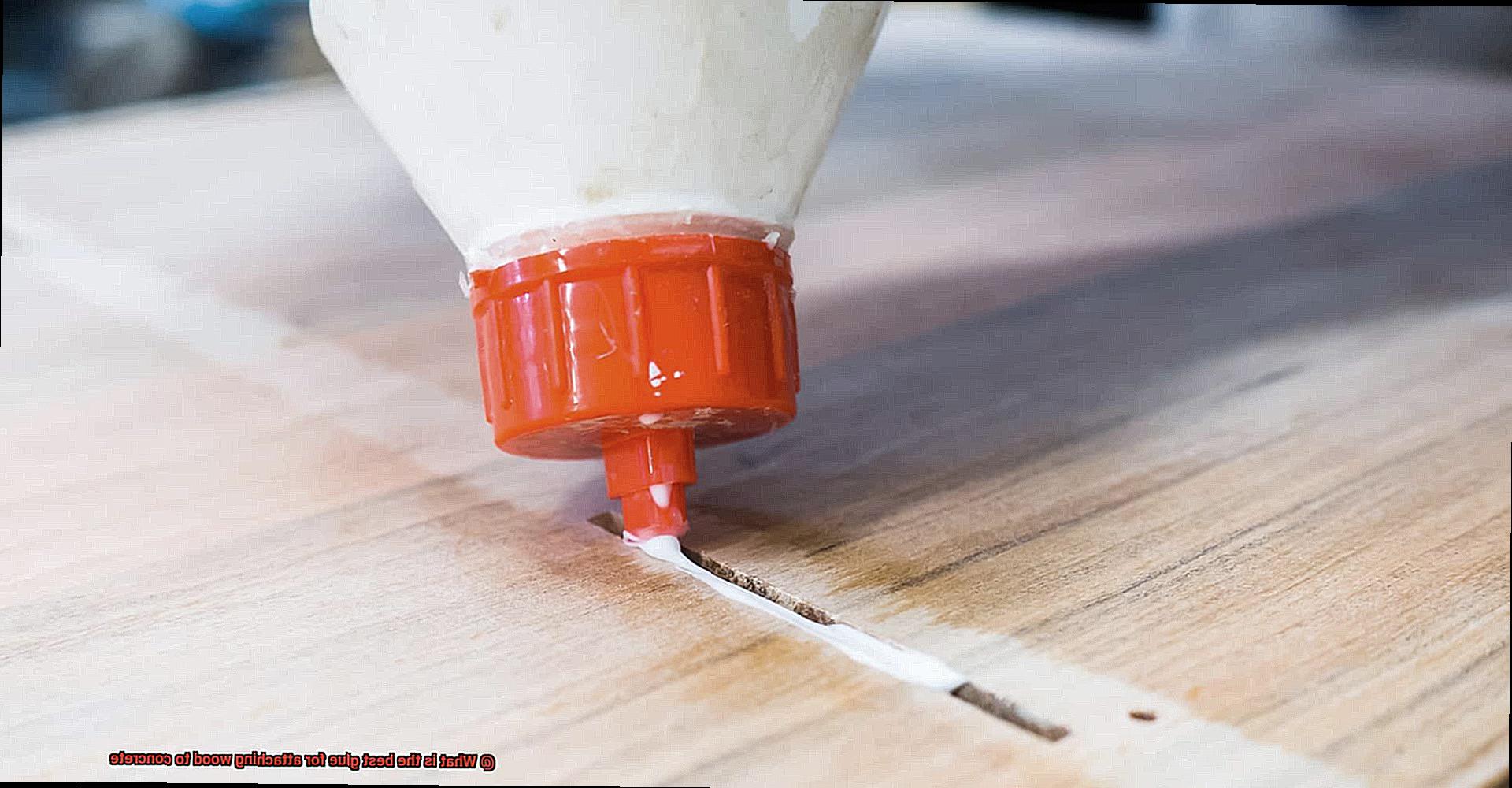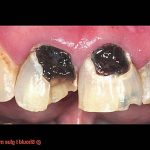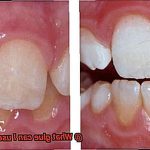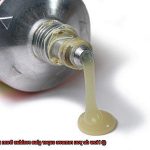Are you tired of using nails, screws or bolts to attach wood to concrete? If so, we have the perfect solution for you: glue. But not just any glue will do the job. You need an adhesive that will provide a strong and durable bond between wood and concrete. That’s where we come in.
Choosing the best glue for attaching wood to concrete can be overwhelming with so many options available in the market. Each adhesive has its own unique strengths and weaknesses, making it a challenge to select the right one for your project. Some adhesives work better on uneven surfaces, while others are ideal for smooth surfaces. Additionally, some adhesives are moisture-resistant while others offer flexibility.
In this comprehensive guide, we’ll walk you through everything you need to know about selecting and using the best glue for attaching wood to concrete. We’ll cover different types of adhesives and their properties, their suitability for various applications, and how to apply them effectively for optimal performance.
Whether you’re a DIY enthusiast or a construction professional, our guide will help you make an informed decision about which glue is best suited for your wood-to-concrete bonding needs. So let’s dive in and find out which adhesive will work best for your next project.
Types of Glue for Attaching Wood to Concrete
Contents
Before you dive in, it’s essential to know which type of glue is best suited for the job. With several options available, choosing the right one can be overwhelming. But don’t worry, we’ve got you covered. In this post, we’ll explore the various types of glue that can be used for attaching wood to concrete.
Epoxy
When it comes to attaching wood to concrete, you want a bond that’s robust and durable. That’s why epoxy is the way to go. This popular adhesive is known for its impressive strength and resilience in harsh environments. Made up of two components – a resin and a hardener – epoxy requires thorough mixing before application, which can be done using a brush or roller.
Before applying the epoxy, it’s essential to prepare the surfaces correctly. The concrete surface should be free from dust, debris, and moisture. The wood must also be clean and dry, with any varnish or paint removed. With both surfaces prepped to perfection, the epoxy can be applied.
Once applied, the two surfaces should be pressed together firmly for several minutes to ensure a strong bond. To hold the wood in place while the epoxy cures, use clamps or weights. Keep in mind that curing times can vary from a few hours to overnight.
While epoxy provides an unparalleled bond, it comes with some cautions. Removing improperly bonded wood can be challenging, so make sure you’re ready to commit. Additionally, epoxy is toxic and should only be used in a well-ventilated area with appropriate safety measures.
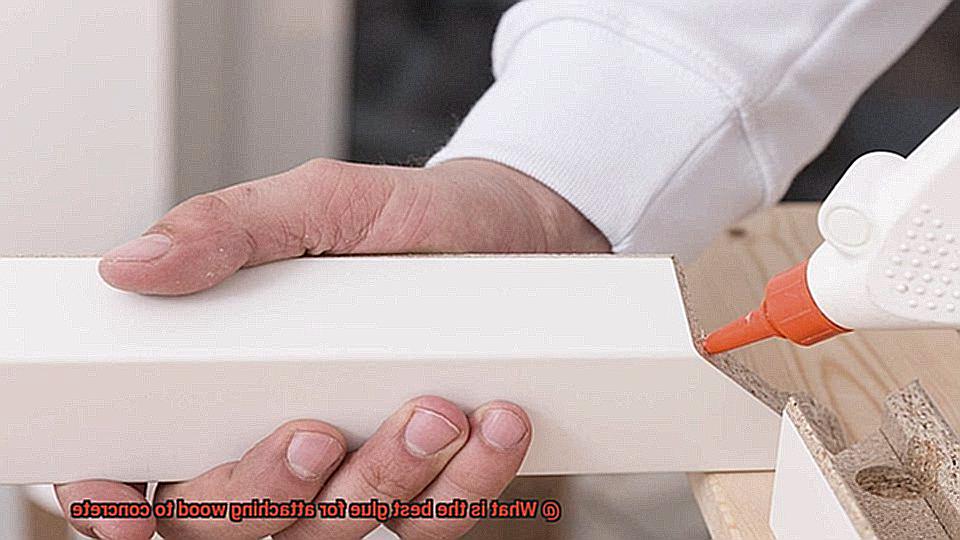
Polyurethane Glue
Look no further than polyurethane glue, also known as PU glue. As an expert in this field, I can tell you that this type of glue has unique benefits that make it an ideal choice for this application.
One of the major advantages of polyurethane glue is its ability to expand as it dries. This characteristic allows it to fill in any gaps between the surfaces being bonded, creating a strong and durable connection. Moreover, this type of glue can be used on various surfaces, including wood, concrete, metal, and plastic – making it a versatile choice.
However, proper preparation of the surfaces is critical when using polyurethane glue. The concrete surface should be free from any dust or debris, while the wood should be sanded and wiped down to remove dirt or oil. Once the surfaces are ready, apply a thin layer of glue to one surface and press the two together firmly. Do not forget to clamp the materials together until the glue has fully cured.
Another significant advantage of polyurethane glue is its resistance to water and heat. This makes it a perfect choice for outdoor projects or applications that involve exposure to moisture.
Construction Adhesive
Look no further than construction adhesive. This heavy-duty adhesive is a popular choice for attaching wood to concrete, providing strength and durability that can withstand even the harshest weather conditions.
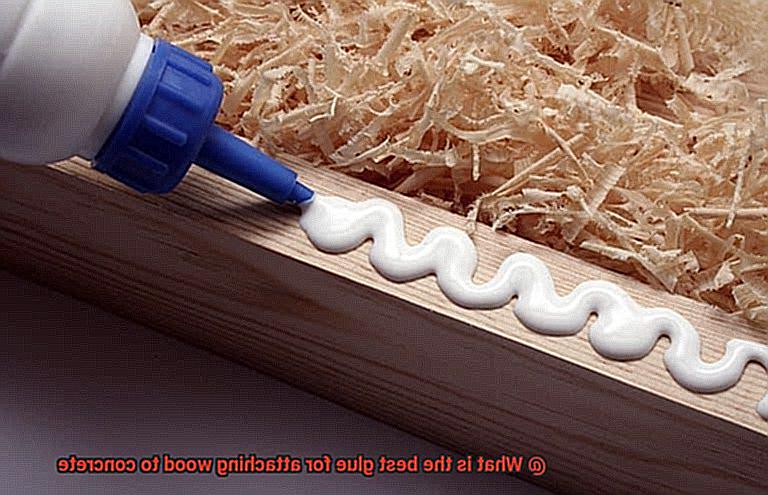
One of the key benefits of using construction adhesive is its ability to resist water, heat, and chemicals, making it perfect for outdoor applications. Whether you’re building outdoor furniture or constructing a shed, this adhesive can provide a long-lasting bond that won’t break down over time.
But how do you use construction adhesive effectively? It’s important to prepare both surfaces before applying the adhesive by thoroughly cleaning them of any debris or dust. To apply the adhesive, use a caulking gun to create a zig-zag pattern with enough adhesive to ensure full coverage. Once applied, press the wood firmly onto the concrete surface and hold it in place for several minutes until the bond has fully set.
Another advantage of construction adhesive is its versatility. It can be used on a variety of surfaces including plywood, particleboard, and MDF. However, keep in mind that mistakes during application can be difficult to fix and direct sunlight can cause the adhesive to break down over time.
Cyanoacrylate Glue (Super Glue)
If you are looking for a quick and easy solution to attach wood to concrete surfaces, look no further than cyanoacrylate glue, also known as super glue. This adhesive forms a strong bond between these two materials, making it a popular choice for DIY projects and repairs.
One of the biggest advantages of using cyanoacrylate glue is its lightning-fast setting time. Within seconds, it dries and creates a bond that can withstand significant stress without breaking. This feature makes it ideal for small projects or when working in hard-to-reach areas.
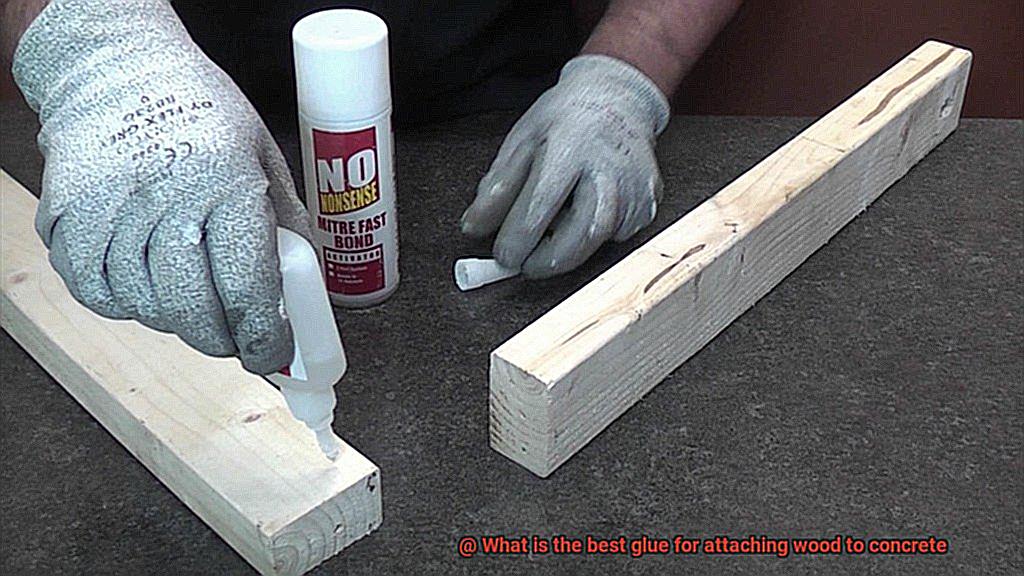
However, it is important to note that cyanoacrylate glue may not be as strong as other types of adhesives when used on porous materials like concrete. While it can work well for small projects, it may not be the best choice for larger ones where a stronger bond is required.
Additionally, sensitivity to moisture is another factor to consider when using cyanoacrylate glue. If exposed to moisture, the bond between the wood and concrete surfaces can weaken and break down. To prevent this from happening, ensure that both surfaces are completely dry before applying the glue.
Factors to Consider When Choosing the Best Glue
Firstly, it’s essential to consider the types of wood and concrete that you will be working with. Different woods and concretes have their own unique properties that can impact how well glue adheres. For example, some woods may be more porous than others, which can affect the effectiveness of the glue. Additionally, different concrete surfaces may vary in smoothness or roughness, which can also impact the bonding strength.
Secondly, think about the environment in which the glue will be applied. If your project is located outdoors, then your chosen glue will need to withstand exposure to sunlight, moisture, and temperature changes. Conversely, if your project is indoors, weather resistance might not be as crucial.
Lastly, assess the strength and durability required for your project. Different glues have varying chemical compositions and bonding properties that affect their strength and durability. Some projects may require a specific type of glue that offers additional benefits such as flexibility or resistance to impact.
Advantages and Disadvantages of Different Types of Glues
Each kind of glue has its own unique characteristics that you need to consider before making a choice.
Let’s start with epoxy glue, which is a two-part adhesive consisting of a resin and hardener. It’s known for its high-strength bond and is perfect for bonding wood to concrete. Epoxy glue can withstand extreme temperatures, water, chemicals, and impact. However, it takes a while to cure and requires proper ventilation during application.
Next up is polyurethane glue, a single-component adhesive that reacts with moisture in the air or substrate to form a strong bond. Although not as strong as epoxy glue, it still provides a robust bond. It’s resistant to water and heat but can foam during curing, making it challenging to clean up.

Thirdly, construction adhesive is versatile and can bond different materials, including wood and concrete. It creates a strong bond that can withstand heavy loads, vibrations, and temperature changes. However, it may not be as strong as epoxy or polyurethane glue.
Lastly, contact cement is a solvent-based adhesive that creates a strong bond when the surfaces are pressed together. It’s easy to apply and dries quickly. However, it may not be suitable for heavy loads or outdoor applications.
Tips for Applying the Best Glue
Attaching wood to concrete can be a challenging task, but with the right glue and proper application, you can achieve a strong and long-lasting bond. Here are five essential tips to help you apply the best glue for the job:
Clean and Dry Surfaces
Before applying any glue, ensure that both the wood and concrete surfaces are clean and dry. Any dirt or moisture can weaken the bond and cause the glue to fail. Use a wire brush or sandpaper to clean the concrete surface and wipe down the wood surface with a clean cloth or use a vacuum to remove any sawdust or debris.
Use a Notched Trowel
When applying the glue to the concrete surface, it is recommended to use a notched trowel. This creates ridges in the glue, allowing for better adhesion between the two surfaces. Apply an even layer of glue on the concrete surface and use the notched trowel to create ridges in the glue.
Apply Thin Layer of Glue
Apply a thin layer of glue to the wood surface using a brush or roller. Be careful not to apply too much glue as this can cause excess glue to seep out when pressure is applied.
Apply Even Pressure
Once both surfaces have been glued, carefully align them and apply pressure evenly across the surface. You can use clamps or heavy objects to hold the two surfaces together while the glue dries. Applying enough pressure ensures that the glue fully penetrates into the pores of both surfaces, creating a stronger bond.
Allow Adequate Drying Time
It is important to allow adequate drying time for the glue. This can vary depending on the type of glue used, but it is generally recommended to wait at least 24 hours before removing any clamps or heavy objects.
Remember that some types of glue may not be suitable for certain types of wood or concrete surfaces. If you are unsure which type of glue to use, it is always best to check with the manufacturer or an expert in the field.
Troubleshooting Common Issues with Wood-Concrete Bonding
Don’t fret. We’ve got you covered with some troubleshooting tips to ensure a strong and long-lasting bond.
First and foremost, surface preparation is crucial. A clean, dry, and contaminant-free concrete surface is essential for successful bonding. Neglecting this step can lead to a weak bond or complete failure. To troubleshoot this issue, don’t skip the manufacturer’s instructions for surface preparation and consider using a degreaser or other cleaning solution if necessary.
Improper application of glue is another common issue. Remember to apply the glue evenly and in the correct amount. Too little glue can cause a weak bond, while too much can result in gaps in the bond. To troubleshoot this issue, make sure to follow the manufacturer’s instructions for application and use a spreader or roller for even coverage.
Temperature and humidity can also affect wood-concrete bonding. If the temperature is too low or the humidity is too high, the glue may not cure properly, leading to a weak bond. To troubleshoot this issue, aim to bond wood to concrete in ideal conditions – typically between 60-80 degrees Fahrenheit with a humidity level between 40-60%.
iuv3toSPMhc” >
Conclusion
To sum up, attaching wood to concrete may seem like a daunting task, but the right glue can make it a breeze. To choose the best glue for your project, consider factors such as the type of wood and concrete surfaces being used, the environment in which the bond will be exposed, and the required strength and durability. Popular options include epoxy, polyurethane glue, construction adhesive, and cyanoacrylate glue.
Before applying any glue, proper surface preparation is crucial. Use a notched trowel to apply glue on the concrete surface and an even layer of glue on the wood surface. Applying adequate pressure and allowing enough drying time are also essential for a strong bond.
If you encounter issues like weak bonding or gaps in bonds, refer to the manufacturer’s instructions for application and use cleaning solutions or spreaders. Temperature and humidity can also affect bonding; therefore, it’s best to work under ideal conditions.
With this comprehensive guide on selecting and using different types of glues for attaching wood to concrete, you can make an informed decision based on your specific needs.

